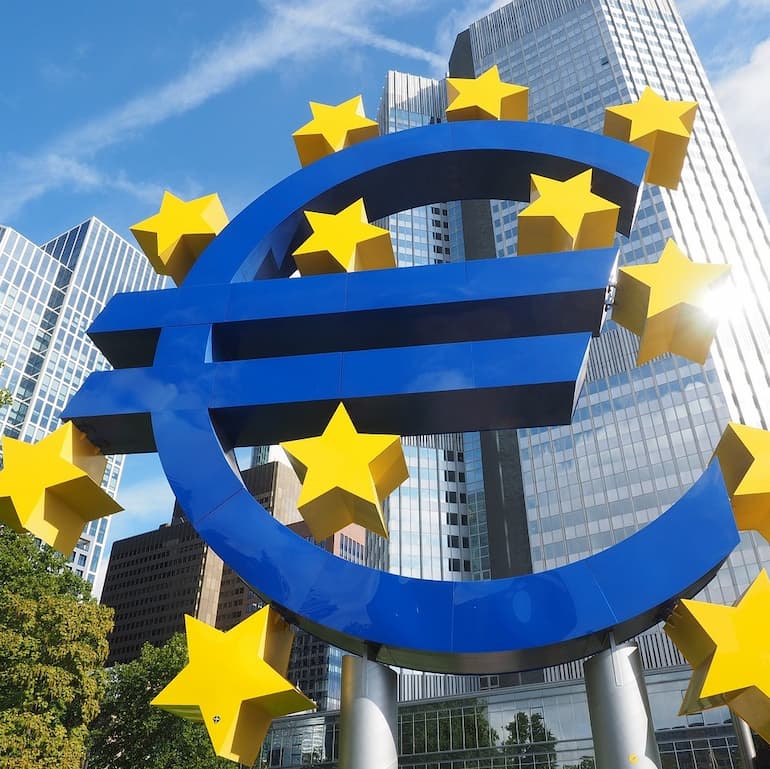Strategy
Eurozone Inflation Drops Again – Reactions

After eurozone inflation fell again by more than expected in November, investment managers discuss the impact.
Eurozone inflation dropped to 2.4 per cent in November from 2.9 per cent in October – its lowest level since 2021, according to flash estimates from the EU statistics agency Eurostat released on Thursday.
The figures suggest that efforts to curb inflation in the bloc are paying off, but it comes at a cost, with the eurozone’s economy in a mild technical recession, leading to speculation about when the European Central Bank (ECB) could start cutting rates.
Core inflation, which excludes volatile fuels and food prices, fell to 3.6 per cent from 4.2 per cent. The ECB has said that interest rates, which currently stand at a high of 4 per cent, would be set at sufficiently restrictive levels for as long as necessary for a timely return of inflation to its 2 per cent target. The ECB will meet on 14 December to decide.
In the UK, interest rates are currently higher than in the eurozone at 5.25 per cent, but UK inflation is also higher at 4.6 per cent. See more coverage here.
Here are some reactions from investment managers to the figures.
Daniele Antonucci, chief investment officer at Quintet
Private Bank (parent of Brown Shipley)
“At 2.4 per cent, the eurozone inflation number came in below the
lowest forecast in the major consensus surveys. The good news is
that the deceleration looks quite widespread and not just due to
energy.
“Energy inflation remains well in negative territory, but services and non-energy industrial goods inflation slowed too. Stripping out volatile components such as energy and food, the core measure recorded just above 3.5 per cent and we expect further deceleration ahead.
“The eurozone is currently in a mild technical recession. Manufacturing activity has been contracting since the start of 2023, while services are also decelerating more visibly now. However, inflation has continued to fall further than expected in recent months, leading to speculation about when the European Central Bank could start cutting rates.
“Our view is that the ECB will hold rates during the first months of 2024, before it begins lowering them to stimulate growth around mid-year. We think interest rates have peaked and government bonds are even more attractive.
“Government bonds yields tend to fall around peak rates (just before or at). This will push the prices of today’s higher yielding bonds up. Therefore, we are keeping our current exposure to longer-dated high-quality government bonds in the eurozone, as these tend to outperform shorter-dated bonds after the peak in interest rates in a scenario of slower growth and inflation.”
Michael Field, European market strategist at
Morningstar
“The news that inflation came in below economists’ expectations
is something to be celebrated. In a normal year, core prices
rising 3.6 per cent year-over-year would be something to be
concerned about; however, in light of the double digit inflation
rates we saw in 2022, this is a very positive development.
“That said, looking at the breakdown of inflation, it is clear that the fall in energy prices was the overwhelming driver of the headline rate falling to 2.4 per cent. However, energy prices can be volatile, therefore they can easily rise again in the coming months. Meanwhile inflation in areas where consumers spend much of their hard-earned cash, such as food, still rose by almost 7 per cent year-over-year. Costs of housing, which have been rising rapidly, are actually excluded from the calculation.
“Despite the large, and welcome, fall from the dark inflation days of 2022, we are still a way off the ECB’s targeted 2 per cent inflation rate, and it could be well into 2025 before we get there. However, in the meantime, the easing that we are seeing in inflation rates should eventually feed its way into the economy. It still remains to be seen whether lower prices alone will be enough to stimulate the eurozone’s struggling economy.”